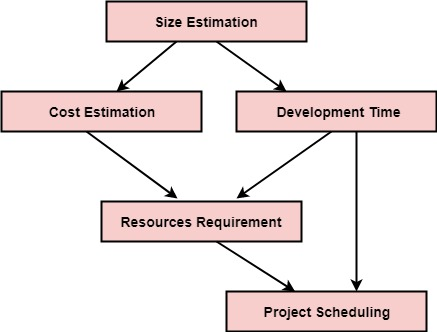What is software development life cycle?
SDLC or the Software Development Life Cycle is a process that produces software with the highest quality and lowest cost in the shortest time possible. SDLC provides a well-structured flow of phases that help an organization to quickly produce high-quality software which is well-tested and ready for production use.
Stage of Software Development Life Cycle (SDLC)
- Requirement analysis
- Planning
- Architectural design
- Software development
- Testing
- Software deployment
Purpose of SDLC model
- Lead to good software
- Reduce risk
- Enable visibility and measurement
- Enable teaming
- Requirement analysis
In software engineering,requirements analysis focuses on the tasks that determine the needs for conditions to meet the new or altered product or project,taking account of the possibly conflicting requirements of the various stakeholders,analyzing, documenting,validating and managing software or system requirements.
Requirement analysis is critical to the success or failure of a system or software project.The requirements should be documented,actionable,measurable,testable,traceable,related to identified business needs or opportunities,and defined to a level of detail sufficient for system design.
2. Planning
Software manager is responsible for planning and scheduling project development. They manage the work to ensure that it is completed to the required standard. They monitor the progress to check that the event is on time and within budget. The project planning must incorporate the major issues like size and cost estimation scheduling, project monitoring, personnel selection evaluation and risk management. To plan a successful software project, we must understand.
- Scope of work to be completed
2. Risk analysis
3. The resources mandatory
4. The project to be accomplished
5. Record of being followed
Software project planning starts before technical work start.The various steps of planning activities are

3. Architectural Designing
The design phase starts after requirement analysis and planning of the product. The main purpose of this phase is to design a suitable structure based on the SRS (Software requirement specification) the software architecture is derived from the SRS document. The architecture engineers design the software based on the SRS documentation.
4) Software development
This phase is the actual implementation phase. After the completion of designing then developers write the code as per the requirements. Developers must follow the coding guidelines of their organization. Different high level languages are there for coding like java, python, c, c++ etc. Selection of language depends on the type of the software.
5)Testing
After successful completion of coding it is checked whether the software is working as per the requirements or not.It make sure that the product is working as per the requirements.The testers expect to find any bugs are present in software before delivery to the client.This phase goes through different levels of functional and non-functional testing.
6) Maintenance
After the final handover of the software, some up-gradation or changes are required from time to time to make it work flawlessly. If users face any issues with the software, it is resolved by the maintenance team.
How the SDLC Works
SDLC works by lowering the cost of software development while simultaneously improving quality and shortening production time. SDLC achieves these apparently divergent goals by following a plan that removes the typical pitfalls of software development projects. That plan starts by evaluating existing systems for deficiencies.
Next, it defines the requirements of the new system. It then creates the software through the stages of analysis, planning, design, development, testing, and deployment. By anticipating costly mistakes like failing to ask the end-user or client for feedback, SLDC can eliminate redundant rework and after-the-fact fixes.
It’s also important to know that there is a strong focus on the testing phase. As the SDLC is a repetitive methodology, you have to ensure code quality at every cycle. Many organizations tend to spend little effort on testing while a stronger focus on testing can save them a lot of rework, time, and money. Be smart and write the right types of tests.
How can DevSecOps be integrated into SDLC?
By following some best practices, DevSecOps can be integrated into SDLC in various ways.
- Planning and Requirement Analysis: Here, security requirements and appropriate security choices that can mitigate potential threats and vulnerabilities are identified in this stage. What security design principles and best practices to be used are also thought about here.
- Architectural Design: The development team uses the security design principle and architecture to consider potential risks. This stage involves threat modeling, access control, encryption mechanism, and architecture risk analysis.
- Software Development and Testing: The code reviews are done to ensure software follows code standards and security controls are implemented. Security vulnerability tests like penetration testing are also done to identify potential issues.
- Deployment: Automated DevSecOps tools are used to improve application security. To ensure the software is deployed securely, firewalls, access controls, and security settings are configured.
- Maintenance: Security continues after deployment. The team must continuously monitor the software for security vulnerabilities. The team would also update the software with security patches and updates as necessary.
Posted by
Akshay Baratagi
Test Engineer
